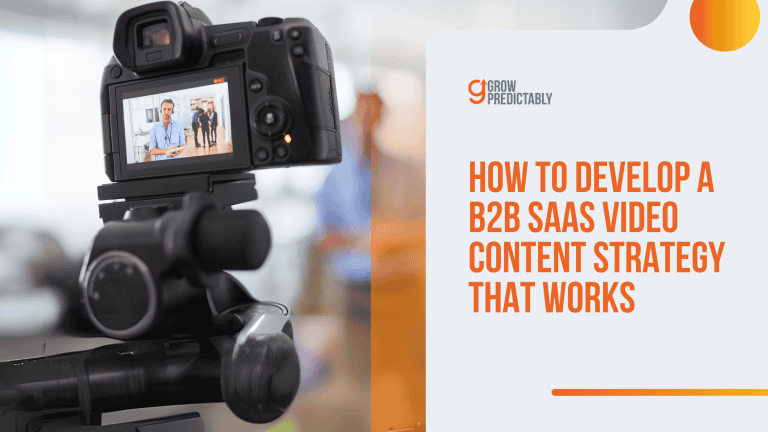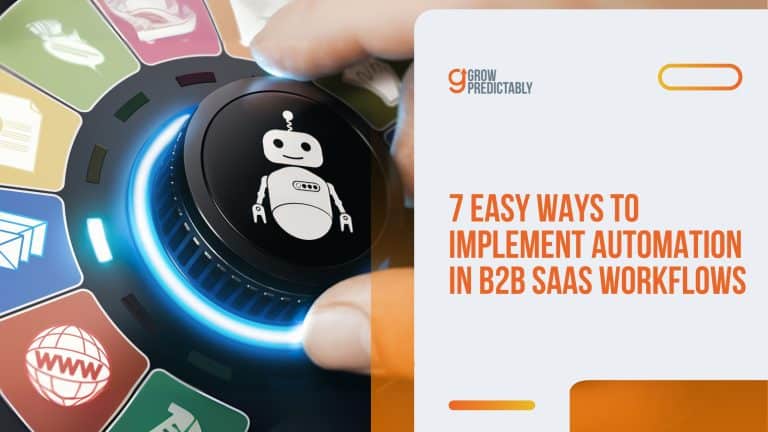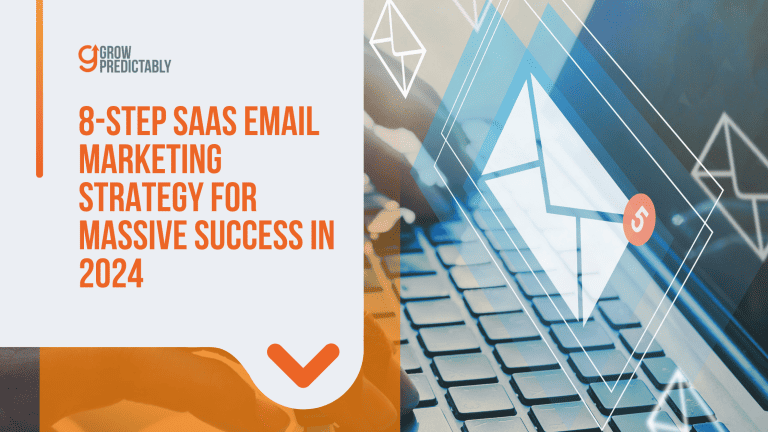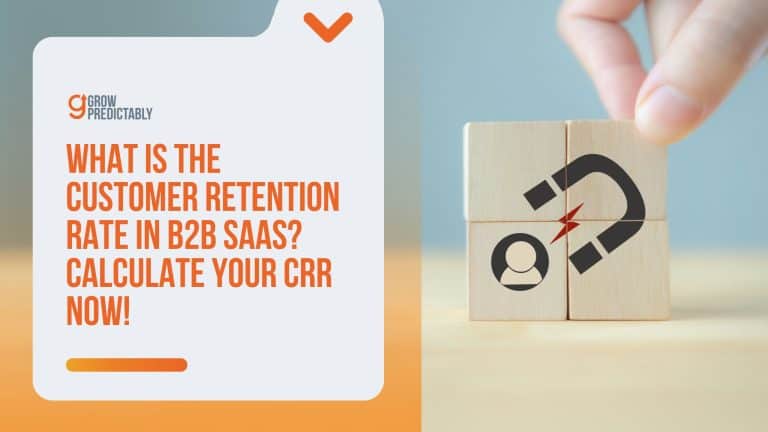How to Use Humor in B2B Marketing for Better Engagement and Connection
You probably think humor doesn’t belong in B2B.
“Too serious,” right?
But here’s where that advice fails you: it ignores the fact that your buyer is just a person — not a job title.
Humor done right captures the audience’s attention and makes brands more human.
Slack, Mailchimp, and others get this.
They use humor to say what everyone’s thinking — and their audience loves it.
So the real question isn’t “should I use humor?”
It’s “What kind of joke gets a CFO to share your post?”
Want to skip the cringe and get to the good stuff?
Let’s break down the how and exactly why it works when done right.
The Power of Humor in B2B Marketing
Humor isn’t just for making people laugh; it’s an untapped goldmine for engagement in B2B marketing.
It allows your brand to stand out, creating an emotional connection that business decision-makers won’t easily forget.
Laughter fosters relatability, making your brand more memorable and human.
By engaging customers emotionally, brands not only create immediate impact but also develop long-term relationships, resulting in repeat business and advocacy within professional networks.
Instead of the usual dull interactions, bring some wit into your content to catch and hold attention.
Want to amp up your brand’s engagement metrics?
Incorporate funny content to spark conversations.
When decision-makers chuckle, they’re not just entertained—they’re engaged.
This engagement can significantly increase your brand’s relatability and memorability, hallmarks of a successful marketing strategy.
- Emotional Connection: Humor builds stronger relationships based on emotional appeal. It transforms transactional relationships into partnerships founded on trust and rapport.
- Shareability: Humorous content is inherently shareable, effortlessly multiplying your brand exposure and boosting organic reach. A single funny post can go viral, spreading your message far and wide.
- Brand Differentiation: Amidst a sea of stoic corporate tones, a bit of humor sets your brand apart. It crafts a distinct identity that’s approachable yet professional.
Marketing thrives on emotional connections; humor is a catalyst for this.
Positive emotions linger, and associating your brand with laughter makes you unforgettable.
When humor is woven into your strategy, your content transforms into a magnet for attention and dialogue, ultimately leading to stronger, more genuine connections in the B2B landscape.
Creating a Humor-Driven Marketing Strategy
An effective marketing strategy isn’t a luxury; it’s a necessity.
When woven into this strategy, humor becomes a dynamic force that drives meaningful engagement.
Start by understanding your target audience deeply—their pain points, preferences, and the daily grind they navigate.
This knowledge is your secret weapon to crafting content marketing that doesn’t just reach people but resonates on a deeper level.
Knowing your audience is more than just demographic data; it’s about understanding what makes them tick.
This insight allows you to create content that builds lasting connections.
Creative content that combines educational material with creative elements can significantly enhance engagement and brand recognition.
When your humor hits home, it not only grabs attention but also encourages loyalty, creating bonds that can withstand the test of time.
- Audience Insight: Delve into what entertains, annoys, and excites your audience. Use this information to tailor your humor in a way that feels personal and relevant.
- Resource Efficiency: A well-defined target market means your resources are spent wisely. Effective humor-driven campaigns reach the right eyes and ears, avoiding the pitfall of wasted efforts.
- Light-hearted Engagement: Campaigns that embrace humor remind your audience that it’s okay to see the lighter side of their challenges. This approach doesn’t diminish your professionalism but highlights your brand’s humanity.
With humor integrated into your strategy, your marketing efforts become more than just pitches—they’re invitations to engage in a more relaxed, human way.
This approach not only fortifies your brand presence but also nurtures a community that values and enjoys interacting with you.
Identify the Right Humor Strategy for Your Business Decision Makers
Think your industry is too buttoned-up for humor?
Think again.
Humor breaks down barriers, builds trust, and boosts loyalty when done right.
You’re not just communicating with large, impersonal corporations—you’re engaging with real individuals who unwind with cat videos and memes and make big business decisions.
In B2B marketing, decision-making processes often involve multiple stakeholders, making it crucial to navigate these complexities effectively.
The right humor style can help you connect more deeply with these individuals.
Know Your People First
Before crafting a humor strategy, it’s crucial to map out who you’re really talking to.
Is it Legal Lisa, who might enjoy clever wordplay about compliance, or Tech Tim, who resonates with jabs at outdated systems?
Creating detailed personas will guide your humor:
- Daily Frustrations: Pinpoint what annoys them to create relatable jokes.
- Personal Tastes: Discover the content they consume outside of work.
- Humor Comfort Level: Assess their receptiveness to varied humor styles.
Match Humor Types to Your Crowd
Different audiences react differently to humor types.
Tailor your style to fit your audience:
Observational Humor
Ideal for technical audiences, observational humor shines a light on shared industry pain points.
This approach serves as a mirror, reflecting the daily challenges and inefficiencies that professionals face, often with a comedic twist.
Trello’s “teamwork made complicated” campaign exemplifies this by humorously illustrating the chaos in project management, fostering a relatable connection with its audience.
Why it Works: It underscores common experiences, validating the audience’s frustrations. By acknowledging these issues humorously, you build a rapport grounded in shared understanding.
Self-Deprecating Humor
Best suited for winning over skeptical buyers, self-deprecating humor involves your brand poking fun at itself.
By doing so, you demonstrate both understanding and authenticity.
Slack’s ads about the messiness of team communication exemplify this, showcasing the company’s awareness of real-world challenges and fostering trust through vulnerability.
Why it Works: It shifts the focus from selling to bonding, making your brand appear more relatable and genuine. It’s a tactic that breaks down barriers and invites the audience to engage on a more personal level.
Gentle Irony
Perfect for software and service companies, gentle irony highlights absurdities within the industry without offending or alienating your audience.
It’s about cleverly pointing out the quirks of traditional methods or outdated practices.
The line, “Still using spreadsheets? How’s that working out?” humorously calls attention to inefficiencies in a light-hearted manner.
Why it Works: It provides a humorous nudge towards innovation and improvement. This style gracefully suggests your solutions without direct criticism, keeping the conversation playful and forward-thinking.
Light Satire
Tailored for industry-savvy audiences, light satire invites knowing laughs about industry nuances.
It’s a sophisticated form of humor that cleverly critiques outdated practices or norms without alienating anyone.
Mocking old-fashioned industry practices subtly highlights the benefits of new solutions.
Why it Works: It resonates with audiences familiar with sector-specific challenges, creating a sense of camaraderie. This form of humor showcases your brand as knowledgeable and forward-looking, subtly advocating for change and innovation.
By matching the right humor type to your audience, you create a marketing experience that’s not only entertaining but also deeply connected to your audience’s realities.
This tailored approach ensures your brand’s humor doesn’t just entertain but also builds lasting relationships and enhances brand loyalty.
Matching Content Types to Audience Platforms
Getting humor right in B2B marketing means knowing not just who you’re talking to, but where you’re talking to them.
Each platform has its own vibe, and your comedic touch needs to match.
A well-designed landing page can serve as a platform for valuable resources, blending entertainment with education to foster deeper connections with prospects and clients.
Here’s how you can play it smart across various digital landscapes:
LinkedIn is where professionals come to network, but that doesn’t mean it has to be all buttoned-up.
Bring a bit of light-heartedness to your thought leadership.
- Memes on Industry Pain Points: Turn common gripes into laughs. Oracle, for example, has used tech and office-related memes to great effect, making them shareable and relatable.
- Behind-the-Scenes Stories: Shed the corporate façade with candid, funny glimpses into everyday office life. HubSpot excels at sharing these slices of relatability.
- “Expectations vs. Reality” Carousels: Use formats that poke gentle fun at industry misconceptions. Canva’s carousels manage to teach while also tickling a funny bone.
Email Campaigns
Emails don’t have to be dry.
Spice things up with humor and watch your open rates soar.
- Catchy Subject Lines: Grab attention with lines like “The report you didn’t know you needed.” Mailchimp often nails this with subject lines that stand out in a sea of sameness.
- Emojis for Emphasis: A cheeky emoji can add personality without needing a single word. Adidas’s use of symbols in emails gives their content that extra dash of attitude.
- Witty PS Lines: End on a high note with a funny PS, like “Still reading? You’re definitely our crowd.” Salesforce often closes emails with this kind of side note charm.
Video Content
The power of video lies in showing your brand’s authentic self.
Humor makes it even more magnetic.
- Quick Takes on Industry News: Keep them engaged with rapid-fire, witty updates on the latest trends—the Onion-style but brand-relevant.
- Blooper Reels: Share the laughs behind the scenes. GoPro’s blooper reels make their brand feel human and approachable.
- Short Skits: Tackle customer issues with a comedic spin. Zendesk’s approach humorously reveals common customer service hurdles.
This is your playground for visual and instant engagement.
- Memes and Infographics: Flex your creative muscles with industry-specific jokes that are easy to digest. Lush Cosmetics delivers humor seamlessly through catchy graphics.
- Instagram Stories: Quick, funny clips that give a real-time peek behind the curtain work wonders. Red Bull uses Stories to share high-energy humor that fits their audience perfectly.
- Reels and Short Videos: Create byte-sized fun from day-in-the-life antics. Brands like Dunkin’ Donuts use Reels effectively to connect through light-hearted narratives.
Winning on Twitter is about snappy, witty content that turns followers into fans.
- Humorous Tweets and Threads: Showcase your brand’s voice with quick, clever comments. Wendy’s is legendary for its use of humor on Twitter, creating brand loyalty one tweet at a time.
- Funny Polls and Questions: Engage your audience with humor that encourages interaction. Innocent Drinks’ playful polls make their followers feel part of the inside joke.
TikTok
Here, creativity knows no bounds.
TikTok is where you let your playful side shine.
- Viral Challenges and Hashtags: Jump into trending challenges that align with your brand’s voice. Chipotle has hit home runs by engaging users through fun, branded challenges.
- Creative Skits and Parodies: Use TikTok to show you’re not afraid to poke fun at yourself or your industry. The Washington Post has captured a younger audience by blending news with humor in innovative ways.
By matching your humor to the medium, you do more than just entertain—you create memorable brand experiences that resonate.
Each platform allows you to highlight different facets of your brand’s personality, ensuring your humor is as effective as it is authentic.
This strategy not only makes you relatable but also strengthens your connection with your audience, turning interactions into relationships.
Timing Matters
A successful humor strategy considers the customer journey, adapting humor to each stage:
By tweaking your humor to fit each phase, you create a seamless, engaging experience that draws your audience in and keeps them hooked.
Use humor to lower their defenses and make taking that step seem more inviting by clearly communicating your value proposition.
Awareness Stage
Here, your goal is to make waves and grab attention.
Use playful memes and relatable scenarios to stand out.
Think of humorous content that makes potential customers pause mid-scroll.
It’s about making a memorable first impression that encourages them to explore further.
Application: Drop in a quirky meme or a witty one-liner related to common industry chuckles. You want them nodding with a smile—mission accomplished if they share it with their network.
Engagement Stage
Now it’s about turning those interested onlookers into enthusiastic participants.
Humor should draw them into conversations, prompting them to engage more deeply with your brand.
This could be through entertaining videos or fun, interactive quizzes that make their involvement enjoyable.
Application: Get creative with stories that include industry-specific humor. It’s not just about laugh-out-loud moments—it’s about finding common ground and sparking conversations.
Subscribe Stage
You’re aiming to convert this newfound engagement into subscriptions.
Humor here builds trust and fosters a sense of community.
Make subscribing feel like joining a unique, entertaining club that they’re excited to be a part of.
Application: Add a dash of humor to your sign-up forms or confirmation messages. Let them feel they’re stepping into a world where your brand’s personality shines through.
Convert Stage
At this point, you’re nudging prospects to commit.
Use humor to lower their defenses and make taking that step seem more inviting.
A cleverly placed joke or playful offer can reduce hesitation and add a sense of ease to the decision.
Application: Bring humor into your promotional offers, making the process feel rewarding rather than transactional. Keep it light and reassuring.
Excite Stage
They’ve made a purchase, now it’s time to blow their expectations out of the water.
Humor at this stage solidifies their satisfaction and keeps the experience positive.
Follow-ups with amusing content can cement their choice as the right one.
Application: Use a funny, warm “thank you” message or a playful tutorial to reinforce their good decision-making.
Ascend Stage
Encourage them up the value ladder.
Humor can be an excellent ally in this to make upgrades feel natural.
Approach upselling with a light-hearted touch that highlights added benefits.
Application: Introduce premium features with humor, making the upgrade seem less like a sales push and more like an obvious choice.
Advocate and Promote Stages
Here, you turn satisfied customers into your brand’s champions.
Use humor to spark storytelling and sharing, turning their satisfaction into enthusiastic endorsements.
Application: Create shareable, humorous content that encourages advocacy. Think along the lines of entertaining testimonials or fun campaigns that naturally spur them to spread the word.
By aligning humor with each phase of the CVJ, you’re not just making people laugh—you’re creating an engaging journey that fosters loyalty and advocacy.
It’s about crafting moments that resonate, ensuring your brand remains top-of-mind in a sea of choices.
QUICK CHECK: IS THIS HUMOR RIGHT?
Ensure your humor aligns with your brand and audience before going live:
✓ Does it match your brand voice?
✓ Comprehensible to your audience?
✓ Free from offensive material?
✓ Does it add value beyond just being funny?
Prepared to test your humor strategy?
Consider what would make even your most serious customer smile.
The goal is not to be a comedian but to be human and relatable in the world of business speak.
Effective B2B humor doesn’t force laughs—it creates moments of true understanding and connection.
Measuring the Impact of Humor in B2B Marketing
Understanding how humor affects your B2B marketing efforts can be tricky, but it’s crucial for gauging its real value.
Humor isn’t just about getting laughs; it’s about driving engagement and achieving your marketing goals.
Humor can also help connect with multiple stakeholders involved in decision-making processes.
Let’s break down how you can effectively measure the impact of humor in your strategy.
Engagement Metrics
Begin by tracking basic engagement stats such as likes, shares, and comments.
These numbers give you a glimpse into how well your humor resonates with your audience.
When people engage with humorous content, it often suggests your message has struck a chord, making your brand more relatable and memorable.
Real World Example: A campaign by GE, centered around quirky engineering humor, boosted their social media engagement by over 30%, highlighting the power of relatable content.
A/B Testing
Use A/B testing to have a clear picture of how humorous content performs against non-humorous versions.
By testing different approaches, you can see which style generates more engagement and conversions, helping you refine your content strategy.
Application: Suppose you’re rolling out a new email campaign—try sending out two versions: one with humor and one more straightforward. Compare open rates, click-throughs, and responses to identify what your audience prefers.
Impact on Marketing Goals
Evaluate the influence of humor on your broader marketing objectives, such as lead generation and conversion rates.
Humor can be a powerful tool to break the ice and lower perceived barriers, making it easier for prospects to engage and convert.
Real World Example: A study by Nielsen found that ads that incorporated humor were more likely to be remembered and led to a 12% lift in brand recall, showing that humor can effectively drive stronger brand recognition and influence purchasing decisions.
Continuous Data Analysis
Scrutinize the data regularly to assess the effectiveness of humor in your marketing efforts.
Look at long-term trends rather than one-off spikes.
Over time, you’ll gather insights on the types of humor that consistently perform well, allowing for continuous improvement.
Real World Example: Drift’s use of humor in their email campaigns didn’t just improve engagement; their humorous approach led to a 25% increase in lead conversions over time.
By measuring these facets, you don’t just guess what works— you know.
Refine your humor-driven strategy using hard data, ensuring your content not only entertains but also contributes meaningfully to your business goals.
This ongoing analysis allows for strategic adjustments, keeping your brand relevant, engaging, and effective in the B2B marketplace.
FAQs
Being Human is Your Brand Advantage
We’ve seen that B2B doesn’t have to mean dry and robotic.
When done right, humor earns attention, builds loyalty, and—importantly—makes your brand memorable.
It’s not about being a stand-up comedian; it’s about showing your audience you get it.
By shifting from buzzwords to human words, your marketing becomes not just more engaging but more effective.
The numbers prove it, and the success stories back it up.
💡 Ready to try it?
Choose one piece of content this week and add a touch of personality—see how your audience reacts.
Need help?
Try tools like Grammarly’s tone detector, or get inspired by successful campaigns like Gong.io or Drift’s.
Here’s a thought: If your audience laughs, might they linger a little longer?
Because ultimately, B2B success comes down to one truth—connection leads to conversion.








